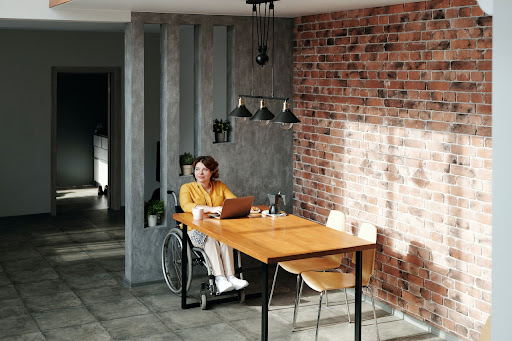
Video-Based Training
It’s a given that all businesses should be accessible to employees, regardless of the mobility, learning, or neurological challenges they live with. Indeed, the Americans with Disabilities Act (ADA) places a legal obligation to provide workers with certain accommodations where necessary. However, the rules here are limited in scope and businesses have an ethical responsibility to go further.
One of the key tools businesses can utilize to improve access isn’t related to redesigning workplaces or investing in equipment. Video-based training protocols can be a powerful component in ensuring all employees can fully engage with the education. This allows them to thrive on behalf of your company and in their own careers.
We’re going to dive a little deeper into how video-based training increases access for employees with disabilities.
Enabling Remote Work
Remote work is a vital tool for making workplaces, in general, accessible to employees living with disabilities and neurodivergent traits. Video-based training makes certain that all these employees also get the high-quality education they need to thrive.
This is because video training modules can be viewed wherever your workers happen to be in the world. They’re not required to travel to a facility or interact with trainers in ways that they find overly stressful. Indeed, in many ways, it puts the control over education back into the hands of workers. They’re free to learn at a pace that suits their needs, revisiting and reviewing aspects they haven’t been able to immediately grasp without disrupting a group session. They can also run videos through any assistive technology software, such as screen readers, they require.
However, it’s important to remember that issuing remote training by video doesn’t absolve businesses of the responsibility for supervision. Make sure there are clear protocols in place for employees to ask questions and gain timely responses.
Offering Visual Aids
One of the most difficult aspects of traditional training manuals and even many e-learning modules is they can be dependent on text or even lectures from the neurotypical perspective of the trainer or human resources (HR) representative. Video training provides visual aids to support the ideas being presented in the modules. Alongside improving accessibility for workers living with disabilities, your able-bodied and neurotypical employees can gain a firmer understanding of the lessons.
Nevertheless, it’s important to make sure these demonstrative aspects include accessibility support. Accurate and clear closed captioning options can be useful for employees who are deaf or live with hearing difficulties. Descriptive audio options are also key tools to empower workers living with visual impairments.
These aren’t always easy elements to implement. This is why it’s important to make accessibility a consideration during your production planning process. A strong video production workflow keeps all important elements organized and ensures you don’t overlook vital tasks. This involves mapping out the four main stages of video production: pre-production, production, post-production, and publishing and promotion. Make certain accessibility is considered, addressed, and assessed through each of these.
Supporting Web Accessibility
Web accessibility is one of the most important points of discussion at the moment. After all, the internet is an essential tool for everyday life and there’s an ethical imperative to make sure everyone who wants to use it is able to. This doesn’t just apply to customers and your website, it applies to your staff’s ability to utilize online tools, too. Video-based training has a role to play in various areas.
Probably the most important consideration is that in order to ensure your video training modules are accessible to all staff, you need to make certain the platforms and tools you’re utilizing to support these videos are accessible, too. This includes sufficient text and background contrast, compatibility with screen readers, and clear navigation options. Your actions here can help set the standard for accessibility across your organization.
This isn’t always easy to achieve if you have no experience in the area. Your company leadership and video production staff could take training courses on web accessibility to understand the key areas of compliance. This not only gives you a practical understanding of what you need to achieve, but it can also enlighten you about areas of accessibility you may not have considered. If you’re hosting your training videos online using a content management system (CMS) there are also a growing number of plugins that scan your content for accessibility issues.
Conclusion
Accessibility is vital to both support employees and makes sure your business benefits from a wider talent pool. Video-based training can be an effective tool for helping workers with disabilities access education in remote circumstances. It also provides a more visual educational experience that can help all workers grasp concepts more effectively. You can also find it boosts web accessibility efforts. However, as with any meaningful change in your business, you should proceed with careful planning supported by reliable information.
